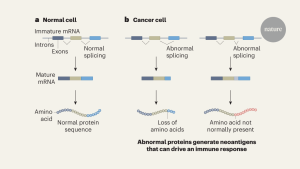
The three most common phases of matter or visible in this image: the solid earth, the liquid water, and a vaporous mist encircling the waterfall.
| Photo Credit: Joshua Sortin
Condensed matter physics is one of the largest, most active branches of contemporary physics research. Simply speaking, scientists in this field study the properties and behaviour of solid and liquid matter. Not so simply speaking, scientists here are interested in the behaviour of large collections of particles that are interacting strongly with each other. Such interactions are optional and infrequent in gases.
Because of its size and scope, condensed matter physics has numerous subcategories. For example, the branch of electronic condensed matter is concerned with how electrons behave in solids and liquids. Research on semiconductors would belong here. Likewise, magnetic condensed matter studies different kinds of magnets and magnetism. Soft matter physics studies objects that are easily deformed but not broken, like biological tissue. Nanoscience studies very small objects that can display both classical and quantum properties in the same settings (such work won the Nobel Prize for chemistry in 2023, for example). Superfluidity studies solids and liquids that flow without resistance, like the electrons in a superconductor. And so on.
Such research has already given us, among other things, modern computing, optical fibres, lasers, nanofabrication, and novel chemical reactions to synthesise new materials.
Of late, researchers have also been exploring quantum condensed matter, where quantum physics processes enable very unusual behaviour not seen in macroscopic solids and liquids. Based on what they learn, they’re developing next-generation technologies like novel electronic items and quantum computers.
Published – February 23, 2025 12:53 pm IST








How Denver’s School Reforms Raised Grad Rate, Got Kids Years of Extra Learning – The 74
Posted 2 mins ago by inuno.ai